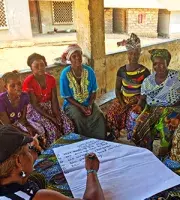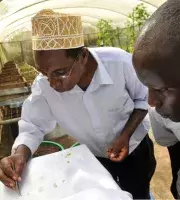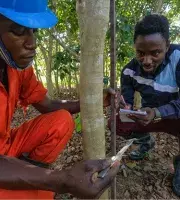What are the underlying causes of the problem my program is trying to solve?

Problem diagnosis
The first step in designing a successful program is understanding the development problem and barriers the program intends to solve and address.
We conduct rigorous analysis to identify which of many contributing factors to a problem are most severe or “binding." By identifying the most severe barriers and challenges, programs can more efficiently and effectively target their resources to achieve an outcome of interest.

Theory of change development
3ie works with partners to develop evidence-informed, contextually tailored theories of change (TOCs) based on rigorous problem diagnosis, including guidance on how to test, adapt, and evaluate the TOCs during and after program implementation.
Recently, we helped the H&M Foundation and its partners develop TOCs to help a program improve the lives of waste-pickers in India.













